Find schools
When you click on a sponsoring school or program advertised on our site, or fill out a form to request information from a sponsoring school, we may earn a commission. View our advertising disclosure for more details.
When you click on a sponsoring school or program advertised on our site, or fill out a form to request information from a sponsoring school, we may earn a commission. View our advertising disclosure for more details.
For women seeking engineering degrees, finding a program with a track record of supporting female engineers is important. The programs below boast relatively high percentages of female students, mentors, organizations, and networking resources on campus to help women succeed.
Read on to discover some of the exceptional bachelor’s and master’s programs attracting top talent across the country. Please note that all of these programs are accredited by the Accreditation Board for Engineering and Technology (ABET), the predominant program-approval body in engineering.
Columbia University is one of the standout options for aspiring female engineers. An impressive 40 percent of its undergraduate students in engineering are women, one of the most equitable enrollment figures across the US (Columbia, Fall 2015). The school hosts thriving chapters of two organizations dedicated to increasing women’s representation technology and engineering: the Society of Women Engineers (SWE) and Girls Who Code. Columbia also has a wide range of undergraduate majors in engineering subfields, including biomedical, chemical, civil, computer, electrical, earth & environmental, industrial, and materials science. One distinctive program for aspiring female leaders in engineering is the bachelor of science (BS) in operations research with a concentration in engineering management systems. In addition to learning a foundation in systems engineering, students take interdisciplinary courses in computer science, business, and economics. Finally, the multi-award winning Dr. Siu-Wai Chan is a laudable mentor and esteemed professor in Columbia’s materials science program (see “Rock Star” section below).
At Olin College of Engineering of Needham, MA, women represent and impressive 49 percent of the engineering students (US News & World Report 2016). In Olin’s unique bachelor of science in engineering (BSE) program, professors impart the fundamentals of the discipline through collaborative, hands-on projects connected to actual global challenges. This college prides itself not only on its gender inclusivity, but also on finding cooperative solutions to real-world problems in companies and communities. Prior to graduation, students must complete a student capstone program in engineering (SCOPE) for an organization. Undergraduate SCOPEs have tackled pressing engineering issues at Fortune 500 companies, government research labs, product development corporations, and startups. These practical projects bridge multiple disciplines and provide an integrative approach to issues in the field.
The University of Illinois at Urbana-Champaign (UIUC) has a flourishing community of women in engineering, including one of the world’s top environmental engineers and professors: Dr. Tami Bond (profiled in “Rock Star” section below). Notably, UIUC hired 23 new women professors in engineering in 2014, an astounding 33 percent increase in representation. Furthermore, between 2013 and 2016, UIUC increased its women in engineering community by 25 percent. This school has undergraduate programs in agricultural, biological, chemical, civil & environmental, electrical, industrial, and nuclear & radiological engineering, to name a few. UIUC even has three online graduate programs in the civil, aerospace, and mechanical branches of engineering. Finally, not only are UIUC’s undergraduate and graduate engineering programs continually among the top ten in the country (US News & World Report 2016), but this school also has many vibrant student organizations committed to supporting women in engineering fields. These campus groups include:
Howard University (HU) is the prestigious alma mater of NASA’s Dr. Aprille Ericsson, one of the pioneering female mechanical and aerospace engineers in the world (see the “Rock Star” section below). As a school with a legacy of diversity and progress, fully 38 percent of HU’s engineering students are women. It also has the most black PhD graduates of any school in the country, and its students come from 65 different countries. HU’s Society of Women Engineers (SWE) chapter received its charter in 1976 and has provided an invaluable support system for its thriving community of women in engineering. HU has six distinct master of science (MS) degrees in engineering subfields: chemical, civil, computer science (CS), electrical, materials science, and mechanical. Finally, HU has an incredible 10:1 student-to-faculty ratio to ensure ample individual attention throughout the course of study.
The University of Texas at Austin (UT) has a women in engineering program (WEP), which aims to recruit women into the discipline and support them through the completion of their degrees and beyond. Although UT currently enrolls only average numbers of women in its undergraduate and graduate programs—27 percent and 21 percent, respectively—it strives to support them by providing academic accommodations and leave for new parents. UT has on-campus master of science (MS) programs in most engineering subfields (e.g., aerospace, chemical, mechanical, petroleum), and offers flexible online and weekend options in three areas: software engineering, mechanical engineering, and engineering management. In the online MS in engineering management program—ideal for aspiring women leaders—students take leadership preparation courses such as management of projects & processes; strategic decision & risk analysis; and legal issues for engineering managers. UT’s Cockrell School of Engineering also provides interdisciplinary, dual degree programs such as its MS in mechanical engineering & MBA program.
At the University of North Carolina—Chapel Hill (UNC), male engineering students are a minority. In fact, an impressive 60.7 percent of UNC’s master’s and doctoral students in engineering were women in fall 2015 ( US News & World Report ). With a history of inclusion and a commitment to increasing women’s representation in engineering, UNC developed an interactive 116-year timeline of the school’s Women in STEM. UNC also demonstrates a continued commitment to bettering the world with programs such as its MS in environmental sciences engineering. This program takes aim at improving air quality, combatting excessive release of contaminants, and developing sustainable energy and water resources.
Santa Clara University (SCU) has a legacy of welcoming women into the field of engineering. As proof of point, 37.8 of its graduate students in engineering were women in fall 2015, much higher than the national average (US News & World Report). SCU has programs across nine branches of the discipline, including a master of science (MS) in engineering management & leadership. Ideal for aspiring technical product managers and chief technology officers (CTOs), this MS features courses such as medical device product development, equipment utilization, and parallel thinking. Please note that this program accommodates different points of academic entry, and can be combined with a bachelor of science (BS) in a five-year option. Additionally, SCU has a flourishing Society of Women Engineers (SWE) chapter offering bi-weekly meetings, social events, professional development opportunities, study sessions, and a voluntary high school outreach program to get more girls involved in STEM.
Finally, while the swelling number of programs supporting women in engineering is encouraging, a crucial problem remains: the disparity in university research funding for men and women in STEM. With more women entering engineering professions, the US Government Accountability Office has been under increasing pressure to equalize the distribution of federal grant funding in STEM research. Under Title IX—the federal law prohibiting sex discrimination—the GAO has recommended establishing more family-friendly policies for grant recipients, overseeing the proposal reviews directly, and improving agency collaboration. The government awards more than $25 billion annually to universities for STEM research, and more must be done to ensure women have fair access to these funds. While federal grants are still proving problematic, other groups are rising to the challenge of supporting women in engineering through scholarship opportunities.
The Society of Women Engineers (SWE) awarded 220 scholarships valued at over $660,000 in 2015. With a generalized application process, female engineering students are entered into the running for all scholarships for which they qualify, including:
The Palantir Women in Technology Scholarship comprises ten academic grants to women in undergraduate engineering programs, ranging from $1,500 to $10,000. Recipients are also invited to attend a two-day workshop in Palo Alto to experience life in the Silicon Valley, the world’s heartbeat of technological development.
The $10,000 Google Anita Borg Memorial Scholarship is available to female undergraduate students in engineering with track records of leadership and stellar academic credentials.
The prestigious L’Oréal Women in Science Fellowship is a postdoctoral grant of up to $60,000 to women with a terminal degree in engineering. L’Oréal has given nearly $3 million in grants to women in science since 2003.
According to the Bureau of Labor Statistics (BLS 2015) population survey, only 15.1 percent of people employed in architecture and engineering professions are women. The National Science Foundation (NSF 2016) adds that most science and engineering (S&E) occupations are disproportionately male, particularly the most lucrative fields such as computer science and electrical engineering. In granular terms, a BLS report titled Women in the Labor Force (2014 ) found that while women make up 47 percent of US workers, they are underrepresented in S&E subfields. Here are the percentages of women in these professions:
Despite the discrepancies, there are several engineering and technology firms which have made strides in recruiting (and retaining) female engineers in their ranks. Here are four outstanding companies which continue to show their commitment to women in engineering:
Bechtel — a global engineering, construction, and project management company based in San Francisco—has a proven track record of diversity. The company counts 120 nationalities and 80 languages among its international workforce, and clearly recognizes that there’s value in promoting an inclusive culture of varying backgrounds, experiences, and views. Bechtel holds an annual Women’s Leadership Conference and a thriving global Women@Bechtel Forum. For its inclusivity, Bechtel won UK’s reputable “Women in Science and Engineering (WISE) Employer Award,” which was presented by Her Royal Highness Anne, The Princess Royal. Forty percent of Bechtel’s engineers are women—two times the UK average—and the company was also awarded Engineering & Information Technology magazine’s 2011 “Best Diversity Company” honor.
General Electric (GE) not only provides $215,000 annually in scholarships for women in engineering, but it also won The Times’s 2016 “Top Employer for Women” award. GE also ranked among the top ten companies for female engineers in Woman Engineer Magazine’s (2016) readers’ choice awards. Finally, GE’s “All Women’s Network” comprises more than 100,000 women around the globe who offer mutual support in leadership skills and career advancement, particularly in technology and engineering occupations.
BNY Mellon won Anita Borg Institute’s “Top Companies for Women Technologists” award in 2015, achieving the highest cumulative score among judges. With more than 44 percent of its global workforce comprising women—including 36 percent of its vice presidents—BNY Mellon has taken significant steps to increase diversity among its ranks. It hosts events such as the Women’s Client Symposia and an International Women’s Day celebration, and has developed a “Real Role Models” video series to promote inclusivity awareness and career development for all of its employees.
In 2015, Intel set a goal to include at least 40 percent women and underrepresented minorities among company hires. NPR’s All Things Considered (Feb. 2016) reported that Intel had exceeded this target and achieved 43.1 percent. Furthermore, Intel made progress among all career segments of its business, significantly increasing the proportion of women in leadership (14.3 percent) and senior (17 percent) positions over 2015. Fortune (2015) attributes the recent explosion of female hires to Intel president Renée James’s $300 million investment in training and recruiting women into its ranks.
There are thousands of talented female professors, researchers, and technological innovators across the globe. By illustration, STEM Connector published its inaugural “100 Women Leaders in STEM,” highlighting the accomplishments of women working in government, business, and the nonprofit sector. These included NASA Deputy Director Lori Garver, Siemens Foundation President Jeniffer Harper-Taylor, and Cisco Senior VP in Engineering Padmasree Warrior. In addition to the 100 accomplished women profiled by STEM Connector, here are five women breaking new ground in the diverse subfields of engineering:
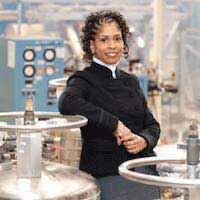
Dr. Aprille Ericsson, NASA Engineer and First Woman to Receive a PhD in Mechanical Engineering from Howard University
“It takes people with different experiences and ideas to come up with unique solutions. It is my experience as an innovator that when diverse ideas collide, it sparks innovation.”
Dr. Aprille Ericsson — a prestigious aerospace engineer—earned her master’s and PhD from Howard University (HU) while working as a federal employee at the NASA Goddard Space Flight Center (GSFC) becoming the first woman in history to do so. She was the oldest of four daughters and attended the Cambridge School of Weston (CSW) where she was inspired by her chemistry teacher Al Bernstein, who told her one day she would become a “tech coed.” In a 2016 newsletter to CSW alumni, Dr. Ericsson emphasized the importance of bringing diverse perspectives to aerospace engineering: “It takes people with different experiences and ideas to come up with unique solutions. It is my experience as an innovator that when diverse ideas collide, it sparks innovation.” She gave www.onlineengineeringprograms.com (OEP) an instance of how varied points of view can enhance problem-solving: “A good example is the international space station with 17 different countries working together. There are hundreds of experiments coming from many different nations, large and small, from all over the world.” Dr. Ericsson has earned acclaim throughout her career, including Women in Science and Engineering’s (WISE) “Best Female Engineer” award (1997), several NASA honors, and the Western Society of Engineers’ Washington Award (2016). She’s currently an adjunct professor at HU’s School of Engineering and serves on the Board of Trustees. In addition to being an outstanding engineer, Dr. Ericsson continues to work for the community by raising money for charity and inspiring underrepresented groups to enter careers in STEM. When OEP asked what advice she’d give to women interested in aerospace engineering, she replied, “I would say to any woman or anybody uncertain in their path and capabilities, first one must believe in oneself. Secondly, find your passion and stick with it.”
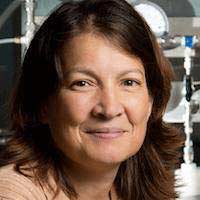
Dr. Tami Bond, Macarthur “Genius Grant” Recipient and Environmental Engineer
Dr. Tami Bond received her master’s degree in mechanical engineering from the University of California at Berkeley (1995), and her interdisciplinary PhD in atmospheric sciences, civil engineering, and mechanical engineering from the University of Washington (2000). In 2004, she received a Faculty Early Career Development (CAREER) award from the National Science Foundation (NSF). As a professor of civil and environmental engineering at the University of Illinois at Urbana-Champaign, Dr. Bond has helped the world to understand the impact of emissions from aerosol products, black carbon, biomass fuels, and engines. Most notably, she has developed affordable interventions, particularly in developing countries where dirty emissions tend to be higher. In 2014, she received the prestigious John D. and Catherine T. MacArthur Foundation “Genius Grant,” a $625,000 stipend to be used as she sees fit. Dr. Bond is not only a globally respected scholar, but also an exemplary professor and mentor.
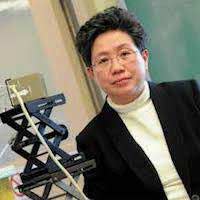
Dr. Siu-Wai Chan, Multi-award Winning Columbia Professor of Materials Science and Engineering
Dr. Siu-Wai Chan — one of the world’s most accomplished researchers in metal oxides and nanoparticles—has won countless honors throughout her career. After receiving her bachelor’s degree from Columbia and doctor of science (Sc. D) from MIT, she went on to become a Presidential Faculty Fellow (1993) and Guggenheim Fellow (2003). She won an IBM Faculty Award in 1998, and has served as Chair in countless organizations, including the American Ceramics Society (Electronics Division). She continues to mentor and inspire her engineering students at Columbia University.
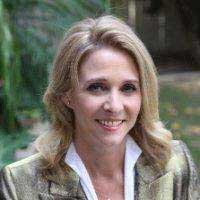
Dr. Brigette M. Rosendall, Combustion Engineer at Solar Turbines and VIP Woman of the Year
Dr. Brigette M. Rosendall received her PhD in chemical engineering from the University of Washington. In 2015, she
became the National Association of Professional Women’s (NAPW) VIP Woman of the Year. She has more than 20 years of experience working with computational fluid dynamics (CFD) and prior to joining Solar Turbines was the principal engineer of Bechtel’s advanced simulation and analysis group, as well as a Bechtel Distinguished Scientist. Dr. Rosendall continually contributes to world-changing initiatives such as cleaning up the Hanford Waste Treatment Plant in Washington and constructing the Tacoma Narrows Bridge.
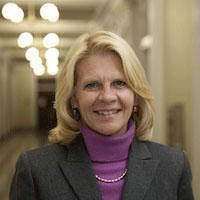
Dr. Karen A. Thole, Distinguished Engineering Educator
“It is very important to build your network, which can be helpful immediately and in the future. By strategically picking service activities, in particular, one can build a strong and influential network that can continue to open doors throughout one’s career.”
Dr. Karen A. Thole received her PhD from the University of Texas at Austin. She’s currently a professor of mechanical and nuclear engineering at Pennsylvania State University (PSU) where she serves as Department Head. Dr. Thole told OEP that she grew up in a small town on a dairy farm. As an undergraduate, she called McDonnell Douglas—an aerospace manufacturing company which later merged with Boeing—and asked to speak with an engineer: “After the operator laughed at me, she put me in contact with one of their many engineers. And, this individual (to this day, I do not know his name) had a huge influence in my decision.” She mentioned that although she sometimes faced discrimination, her husband helped shape one of her guiding principles to deal with the challenges: “Success is the best revenge.” And her career has certainly been successful. Dr. Thole has supervised more than 65 theses and dissertations—inspiring her students to publish in influential peer-reviewed journals and present at conferences—and fosters an overall dynamic and supportive environment for those she mentors. Notably, she founded the Engineering Ambassadors Program at PSU, an organization which has been replicated at universities across the country. She told OEP, “At Penn State in the Mechanical and Nuclear Engineering Department, we have a supportive culture and I attribute that to both the female faculty and the male faculty who are supportive of fostering inclusiveness.” For her accomplishments in academia and beyond, Dr. Thole was named the “Distinguished Engineering Educator of the Year” by the Society of Women Engineers (SWE) in 2014. She closed with some advice for aspiring female engineers: “Go for it! Be prepared to know that you will be in the minority, but the opportunities that await you are infinite… It is very important to build your network, which can be helpful immediately and in the future. By strategically picking service activities, in particular, one can build a strong and influential network that can continue to open doors throughout one’s career.”
As mentioned in the introduction, there were very few women graduating from engineering programs or working as engineers two short generations ago. Fortunately for modern women, there’s a growing abundance of college programs, scholarships, mentors, and progressive companies striving to increase female representation across this impactful sector of the economy. Here’s a collection of resources—professional organizations, conferences, blogs, and other informative sites—to support women in engineering on into the future:
Named for its founder and one of the female pioneers in computer programming, this organization strives to promote women technologists through professional development, ongoing public policy research, scholarship programs, and rewarding top talent in the industry.
Committed to achieving gender parity in STEM occupations, AWIS has a 40 year history of recognizing women’s research contributions, organizing events, and advocating for more female leadership in scientific industries.
Focused on increasing women’s participation science and engineering (S&E), it organizes national conferences, reviews policies of various institutions (e.g., companies, universities, government agencies), and disseminates research findings across the national media.
This site reminds people that “Monoculture is bad for business”—especially in tech where females are underrepresented—and advocates for women through its collection of authoritative research findings, media publications, and other resources.
The IEEE WIE is the largest international professional group in the world dedicated to furthering the interests of female engineers, offering online e-books, an award-winning magazine, and countless networking opportunities for women in the field.
Established in 1981 as the National Council for Research on Women, this organization partners with academic researchers and corporate leaders to advocate for diversity in professional and educational contexts.
SWE is an influential not-for-profit organization which advances women’s participation in STEM professions through scholarship programs, women’s groups across college campuses, and vast professional networking, to name a few initiatives. It also hosts an annual conference: SWE 16.
This group celebrates high-achieving (and underrepresented) women scientists with its profiles on “100 Women Leaders in STEM.”
Based in the UK, WISE aims to get 1 million more women in the STEM workforce through consultancy, training, events, and more.
WSKC—a project developed by the National Science Foundation (NSF) in 2007—maintains a rich database of research relevant to women in STEM occupations, as well as a vibrant online professional community, a quarterly newsletter, and frequent webinars.